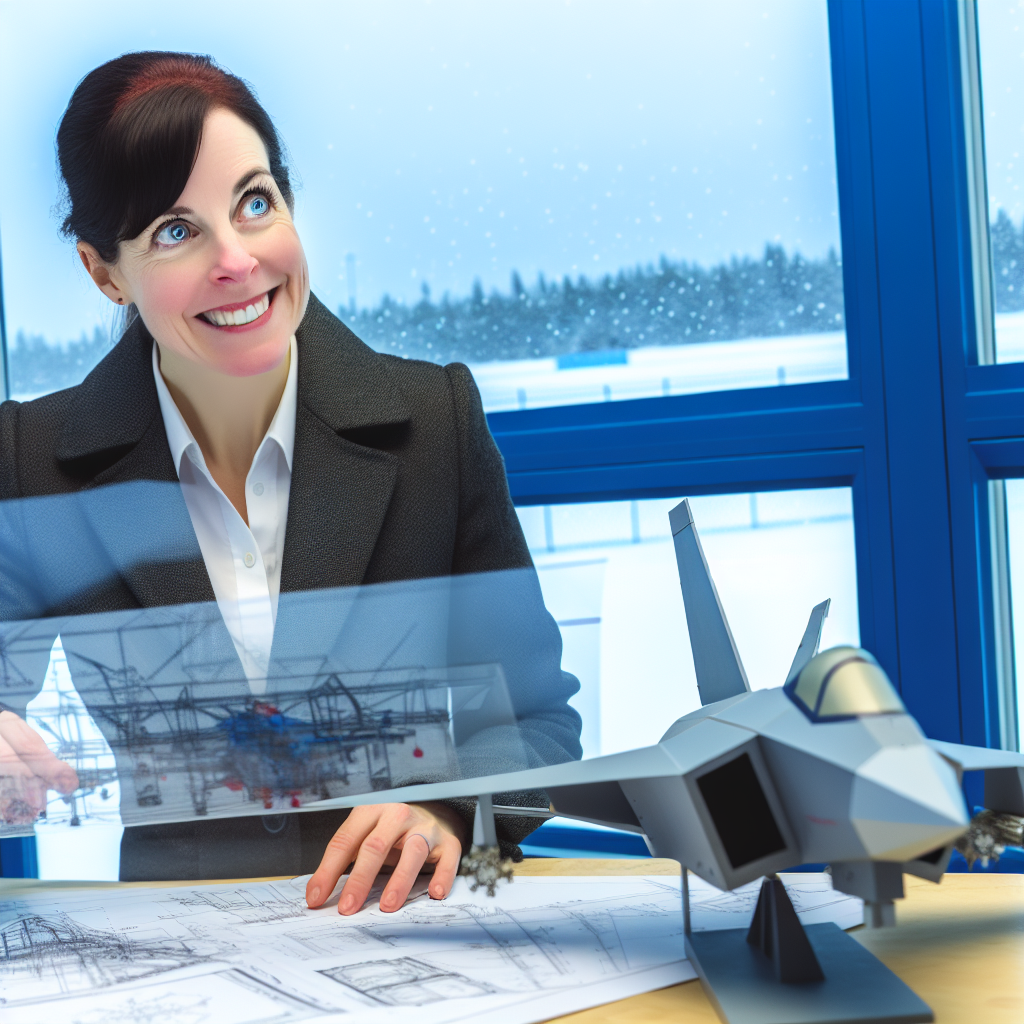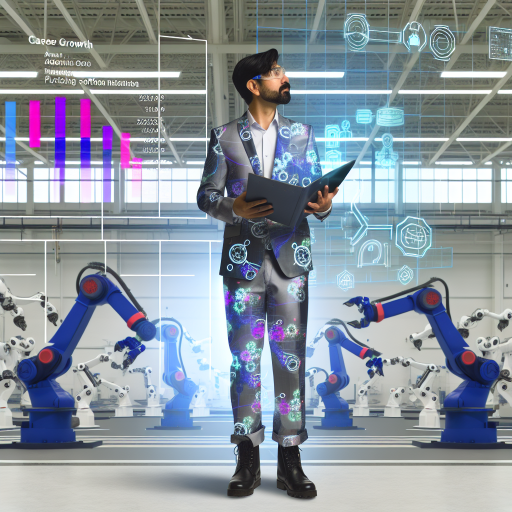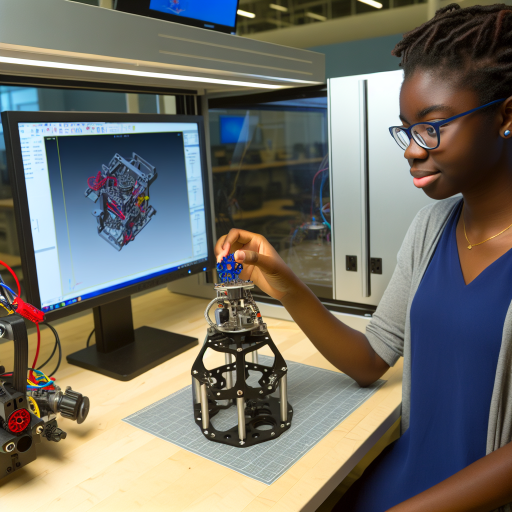Overview of Aerospace Engineering as a Career Field
Introduction to Aerospace Engineering
Aerospace engineering focuses on the design and construction of aircraft and spacecraft.
It combines principles from both mechanical and electrical engineering.
Professionals in this field solve complex problems related to flight and space exploration.
Career Opportunities in Aerospace Engineering
Aerospace engineers have diverse career opportunities.
They can work with government agencies like NASA or private companies like Boeing.
Many also find roles in defense contracting firms.
Additionally, they can engage in research and development projects.
Skills Required for Success
A successful aerospace engineer needs strong analytical skills.
Proficiency in mathematics and physics is essential.
Moreover, engineers must have excellent problem-solving abilities.
Communication skills are also crucial for collaboration with teams.
Education and Training
A degree in aerospace engineering is typically required for entry-level positions.
Many universities offer specialized programs for aspiring aerospace engineers.
Internships and co-op programs provide valuable practical experience.
The Future of Aerospace Engineering
The aerospace industry is rapidly evolving with technological advancements.
Innovation in materials and systems design enhances aircraft performance.
Moreover, the push for sustainable aviation practices is growing.
As a result, career prospects in aerospace engineering remain strong.
Educational Requirements for a Career in Aerospace Engineering
Understanding the Basics
Aerospace engineering requires a strong educational foundation.
Students must complete a bachelor’s degree in aerospace engineering or a related field.
Many universities offer programs specifically tailored for aerospace studies.
Additionally, coursework in mathematics, physics, and computer science is crucial.
Degree Options
Aerospace engineers typically need at least a bachelor’s degree.
Some choose to pursue a master’s degree for advanced opportunities.
A Ph.D. may be necessary for research and academic roles.
Unlock Your Career Potential
Visualize a clear path to success with our tailored Career Consulting service. Personalized insights in just 1-3 days.
Get StartedConsider these degrees:
- Bachelor of Science in Aerospace Engineering
- Master of Science in Aerospace Engineering
- Doctor of Philosophy in Aerospace Engineering
Relevant Coursework
A solid grasp of key concepts enhances an aerospace engineering career.
Courses often include fluid dynamics and structural analysis.
Students also study propulsion systems and aircraft design.
Understanding control systems is essential for success in this field.
Internships and Practical Experience
Practical experience significantly boosts employability in aerospace engineering.
Internships provide hands-on opportunities to apply theoretical knowledge.
Many aerospace companies prefer candidates with relevant work experience.
Networking during internships may lead to job offers after graduation.
Continuing Education and Certifications
Maintaining knowledge of the latest technologies is crucial for aerospace engineers.
Professional certifications can enhance job prospects.
Consider obtaining a license from the Federal Aviation Administration (FAA).
Continuing education courses help engineers stay competitive in the field.
Key Skills and Competencies Required in Aerospace Engineering
Technical Proficiency
Aerospace engineers must have a strong understanding of engineering principles.
They should be proficient in using advanced software tools.
SolidWorks and MATLAB are essential for modeling and simulation.
Additionally, knowledge of CAD systems is crucial for designs.
Problem-Solving Skills
Effective problem-solving is vital in aerospace engineering.
Engineers face complex challenges during the design process.
They must think critically to find innovative solutions.
This ability leads to improvements in safety and performance.
Attention to Detail
Attention to detail can make the difference between success and failure.
Aerospace projects involve numerous intricate components.
Maintaining accuracy in measurements and calculations is essential.
Even small errors can result in catastrophic consequences.
Teamwork and Communication
Collaboration is a key aspect of aerospace engineering projects.
Engineers must work effectively with multidisciplinary teams.
Strong communication skills help convey complex ideas clearly.
Listening to colleagues fosters a cooperative work environment.
Critical Thinking and Analysis
Aerospace engineers rely on critical thinking in their work.
They analyze vast amounts of data from various sources.
This skill aids in making informed decisions and evaluations.
Continuous learning is vital to keep up with industry advancements.
Understanding of Regulations and Standards
Knowledge of industry regulations ensures compliance with safety standards.
Engineers must stay informed about legislation changes.
This knowledge impacts design and manufacturing processes.
It also plays a role in certifications and quality assurance.
Delve into the Subject: Key Responsibilities of a Metallurgical Engineer
Different Specializations within Aerospace Engineering
Propulsion Systems
Propulsion systems focus on creating thrust for aircraft and spacecraft.
Engineers design and test jet engines and rocket engines.
Additionally, they work on improving fuel efficiency and emissions control.
This field requires knowledge of thermodynamics and fluid mechanics.
Structures and Materials
Structures and materials engineers design the airframe of aircraft and spacecraft.
They select materials that maximize strength while minimizing weight.
Common materials include composites, metals, and alloys.
Collaboration with other engineers ensures structural integrity during flight.
Aerospace Systems Engineering
Aerospace systems engineering integrates various engineering disciplines.
It involves managing complex projects from concept to production.
Systems engineers focus on requirements analysis and design validation.
They ensure all components work together effectively and efficiently.
Avionics
Avionics engineers design electronic systems used in aircraft and spacecraft.
They develop navigation, communication, and control systems.
Recent advancements focus on automation and reliability of these systems.
Engineers consistently test these systems under various conditions.
Research and Development
Research and development (R&D) is crucial for innovation in aerospace engineering.
Engineers conduct experiments to explore new technologies.
They work on projects involving unmanned aerial vehicles and aerospace materials.
R&D efforts often lead to significant advancements in the industry.
Manufacturing and Production
Manufacturing engineers focus on the production process of aerospace components.
They ensure that manufacturing meets safety and quality standards.
Additionally, they look for ways to improve efficiency and reduce costs.
This specialization requires a strong grasp of industrial engineering principles.
Uncover the Details: Why Chemical Engineering Is a High-Demand Career
Career Progression and Advancement Opportunities
Entry-Level Positions
New graduates often start as junior engineers or interns.
They work under the supervision of experienced professionals.
This experience builds foundational skills in aerospace engineering.
Common entry-level roles include design engineer, systems engineer, and research engineer.
Internships provide valuable networking opportunities within the industry.
Mid-Level Career Growth
As engineers gain experience, they may transition into mid-level roles.
These roles often involve project management and team leadership.
Engineers can specialize in areas like propulsion systems or structural analysis.
Professional certifications enhance their qualifications and marketability.
Continued education plays a critical role at this stage.
Advanced Roles and Specializations
Senior engineers often oversee large projects and mentor junior staff.
They may also contribute to strategic planning within the organization.
Leadership positions often require strong communication and interpersonal skills.
Specializing in emerging technologies can set candidates apart.
Areas like autonomous systems and space exploration are growing fields.
Management and Executive Positions
Experienced professionals may move into management roles.
These roles prioritize decision-making and overall project oversight.
Senior management positions typically require extensive industry experience.
Advanced degrees, such as an MBA, can be beneficial for career advancement.
Executive roles involve shaping company strategy and innovation.
Networking and Professional Development
Attending industry conferences is crucial for networking.
Professional organizations, like AIAA, provide resources for engineers.
Networking helps engineers stay informed about job openings and trends.
Mentorship programs can also facilitate career growth.
Engaging in continuous learning and skill development is essential.
Delve into the Subject: Salary Expectations for Chemical Engineers in Canada

Industry Sectors Hiring Aerospace Engineers
Commercial Aviation
Commercial aviation remains a leading sector for aerospace engineers.
Airlines continually seek innovative solutions for efficiency and safety.
Companies like Boeing and Airbus are at the forefront of this industry.
They require engineers to design and improve aircraft systems.
Furthermore, commercial aviation emphasizes fuel efficiency and environmental impact.
This sector often invests heavily in research and development.
Defense and Military
The defense sector offers numerous opportunities for aerospace engineers.
Government agencies and private contractors are key players in this area.
Lockheed Martin and Raytheon produce advanced military aircraft and systems.
Engineers contribute to the design and testing of fighter jets and drones.
This sector emphasizes reliability and advanced technology.
Moreover, engineers often work on classified projects, enhancing national security.
Space Exploration
Space exploration represents a thrilling career pathway for aerospace engineers.
NASA and SpaceX lead the way in developing cutting-edge space technologies.
Aerospace engineers help design rockets, satellites, and space habitats.
This field focuses on innovative solutions for long-duration space missions.
Collaboration with scientists is crucial for mission success.
Moreover, the push for Mars exploration has expanded job opportunities.
Automotive Industry
The automotive industry increasingly integrates aerospace engineering principles.
Many electric vehicle manufacturers seek aerospace engineers for design innovations.
Companies like Tesla and Rivian focus on improving aerodynamics and weight.
Engineers contribute valuable expertise in materials and propulsion systems.
This intersection showcases the versatility of aerospace engineers’ skills.
Additionally, advancements in autonomous vehicles rely on aerospace technologies.
Research and Development
Research and development positions offer exciting opportunities in aerospace engineering.
Universities and private research institutions hire engineers for innovative projects.
These roles often involve cutting-edge research in flight dynamics and materials.
Engineers work on simulations and prototypes for future aerospace technologies.
Moreover, interdisciplinary collaboration enhances the results of these projects.
This sector remains dynamic, infused with fresh ideas and challenges.
Gain More Insights: Education Path for Aspiring Metallurgical Engineers
Challenges and Trends in the Aerospace Industry
Current Challenges
The aerospace industry faces several significant challenges today.
One major issue is the increasing demand for cost-efficiency.
Aerospace companies strive to reduce operational costs while maintaining safety standards.
Furthermore, regulatory compliance creates additional financial burdens.
Maintaining skilled labor is another pressing challenge.
As experienced engineers retire, finding qualified successors becomes crucial.
Additionally, supply chain disruptions impact production schedules.
These disruptions often result from global events or trade restrictions.
Lastly, the industry must tackle environmental concerns regarding emissions.
Emerging Trends
Recent trends in aerospace engineering reflect the industry’s adaptation to modern needs.
One significant trend is the shift towards sustainable technologies.
Companies increasingly prioritize eco-friendly materials in design and manufacturing.
For instance, the use of lightweight composites enhances fuel efficiency.
Moreover, digital transformation is reshaping operations and engineering processes.
Companies now leverage advanced analytics and artificial intelligence for design optimization.
This technology enhances decision-making and accelerates project timelines.
Future Directions
The future of aerospace engineering will likely involve revolutionary advancements.
Electric and hybrid propulsion systems are gaining traction.
These systems promise to reduce carbon footprints significantly.
Moreover, urban air mobility is becoming a focal point of innovation.
Companies are exploring the feasibility of air taxis in metropolitan areas.
The industry also anticipates an increase in satellite deployment.
This can enhance global communication infrastructure and data collection.
Furthermore, investment in cybersecurity measures becomes essential for safe operations.
Professional Organizations and Resources for Aerospace Engineers
Key Professional Organizations
Professional organizations offer networking and resources for aerospace engineers.
The American Institute of Aeronautics and Astronautics (AIAA) is a prominent organization.
AIAA provides access to industry publications and events.
Moreover, it fosters collaboration among professionals in the field.
The Society of Aerospace Engineers (SAE International) is also significant.
SAE focuses on advancing aerospace engineering practices and technologies.
Members gain insights from industry experts and technical documents.
Educational Resources and Programs
Numerous universities offer aerospace engineering programs and degrees.
These programs enhance the skills necessary for career advancement.
Online platforms like Coursera and edX provide relevant courses.
Students can obtain certifications in specialized aerospace topics.
Networking and Conferences
Conferences facilitate networking opportunities among professionals.
AIAA hosts annual conferences to share research and innovations.
Attending these events can lead to valuable connections in the industry.
Additionally, local chapters often organize meetups and workshops.
Mentorship and Career Guidance
Finding a mentor can significantly impact career growth.
Many organizations offer mentorship programs for young engineers.
Mentors provide guidance and insights based on their experiences.
Furthermore, career services at universities can aid in job placement.
Online Communities and Forums
Online platforms allow professionals to share knowledge and experiences.
LinkedIn groups and forums focus on aerospace topics and job postings.
Engaging in these communities helps build a professional presence.
Additionally, forums like Stack Exchange provide technical support.
Additional Resources
Bachelor of Science in Geomatics Engineering | Schulich School of …




